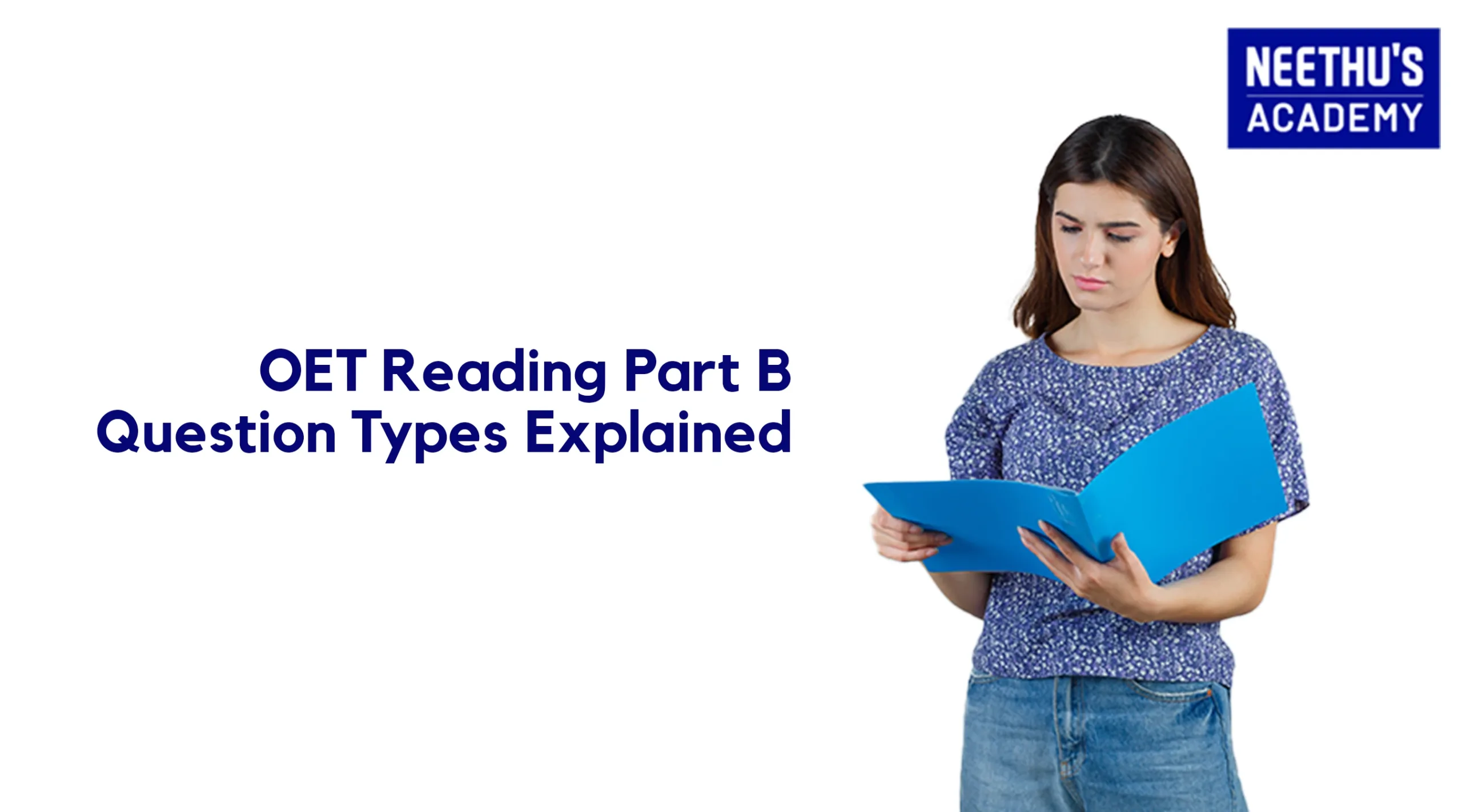OET Listening for Pharmacists: Techniques, Tips, and Resources to Succeed
For all the pharmacists who wish to work in English-speaking countries, the Occupational English Test, or OET, is one of the most important certifications, which help build proof within a healthcare scenario of their language proficiency. In OET, listening is one of the most crucial parts as it is considered one of the competency measures of a candidate’s ability to understand spoken English in the typical professional scenario. The audio accompanying it is specific to healthcare settings, and hence, pharmacists face particular issues such as the technicality of the terms, varied accents, and time-sensitive responses. In this tutorial, you will understand targeted strategies, practice techniques, and key resources that can help you improve your OET Listening score, to be as confident and prepared as possible for test day.
Understanding the OET Listening Test for Pharmacists
The OET Listening test consists of three parts: probing your listening skills in different healthcare contexts. Each part tests a different type of listening skill, so you must be aware of the format and the kind of challenges you might face, too.
OET Listening Section: An Overview
Part A Consultation Transcripts: You will listen to two consultations between a health professional and the patient. You will then complete blank boxes where information is missing. The most important skill tested here is your ability to capture the pertinent information by following the dynamic conversation as accurately as possible.
Part B: Workplace conversations: You will listen to six short recordings which could be a team briefing, handover, or discussion in a health facility. For each of the recordings, you will have one multiple-choice question that challenges your understanding of the purpose and the central message of the conversation. This section tests your understanding of workplace-specific vocabulary and instructions.
Part C Audio Recordings of Presentations: You will listen to two longer recordings, often presentations or interviews on health-related issues. You will answer multiple-choice questions showing how well you understood the speaker’s concepts, intent, and tone. It should focus on gathering clear information, critical reasoning, and important summarizing.
Common Challenges for Pharmacists in the OET Listening Test
Some of the general concerns that pharmacists may have with the OET Listening test include
Technical Vocabulary: Medical and pharmaceutical terms are presented quickly, hence very challenging to follow without prior knowledge of the words used.
Accent Variation: The recording may feature English being spoken with a range of accents including British, Australian, or American English. This would challenge the ability to adapt.
Retention of Detail: Pharmacists must listen closely and take many notes during consultations or complex verbal presentations for step-by-step instructions and medical advice.
To ace this type of test, pharmacists must develop and enhance active listening and context interpretation skills, which we will discuss in the following sections.
Essential Listening Practice Techniques for Pharmacists
Practice with OET Audio for Pharmacists
Listen to OET-specific practice audio material to become accustomed to the structure, the tone, and the pace of what you will hear when sitting for the actual test. Furthermore, it is crucial to use the materials, which comprise natural conversations between a pharmacist and a patient,relatives or between healthcare team members, consultations, and team meetings. Some good sources are:
- Official OET Practice Material: Use official OET practice tests and audio tracks first because they most closely mirror the actual test. The more you listen to these sources, the more you will become accustomed to typical question formats and the nature of conversations.
- Healthcare-related Podcasts and Medical Conferences: Combine listening with OET materials using real-world scenarios. Many healthcare-related podcasts and recorded conferences are accessed online and use relevant terminology in a natural conversational way.
Use note-taking skills
Part A demands to take notes effectively. As you listen, take in only information that is most relevant including symptoms, diagnosis, medication or treatment instructions, etc. Here are a few strategies for note-taking by pharmacists:
- Abbreviate Common Terms: Prepare a shorthand method for commonly used terms. For example, write “RX” for prescription or “BP” for blood pressure to save time.
- Use Structured Notes: Try to structure your notes according to the symptoms, treatments, and recommendations. This would ensure that you do not miss any important points and make it easier to arrange your answers in the test.
- Practice in Real Time: practice as much as you can with the audio recordings, and minimize pausing while you listen. It will prepare you for dealing with critical information at the actual test rate.
Practice Exercises to Improve Active Listening
Active listening exercises are very crucial to pharmacists since they aim to help create an intense concentration needed to catch crucial information. Some of the exercises include:
Summarizing Discussions: Listen to recordings on health and practice summarizing your version of critical discussions. This will sharpen your ability to pick crucial information as fast as you can.
Listening Question Prediction: Read the questions and try to predict what information you’ll need to listen for. Predicting key points requires you to listen carefully for the details that contain the answers.
Shadowing Technique: Shadow as you listen by repeating key phrases or terms in your mind as you hear them. This is a way to help your memory reinforce important concepts.
Familiarize with Common OET Vocabulary for Pharmacists
OET recordings often use clinical and professional vocabulary in health. For instance, a pharmacist will find it highly useful to learn the words related to medicines, therapies, patient encounters, and dosing. Some tips for vocabulary building include:
Develop a Pharmacy Vocabulary: Make a glossary of words that you come across most commonly in pharmacy practice, such as drug names, forms of dosage, and treatment procedures.
Flashcards to Memorize: Flashcards containing medical terms and their meaning help to memorize vocabulary effectively.
Read Pharmacy Journals and Clinical Articles: Regular reading of pharmacy journals and clinical articles can help to expand vocabulary and improve understanding of tough terms being used in OET audio.
Effective OET Listening Tips and Techniques for Pharmacists
Use Context Clues to Understand Complex Terms
If you are unsure of what a word is, do the best you can using context clues from the words and phrases around it. This helps with confusing pharmaceutical words too. For example, listen for contextual clues such as synonyms, definitions, or examples in the dialogue that could help you determine meaning.
Practice Identifying the Speaker’s Tone and Purpose
Tone and intent are key to understanding content in speech. The patient might sound anxious while saying symptoms, and a pharmacist should be reassuring when giving out the reasons for medication. Being sensitive to these minute and subtle changes will help you respond to questions with accuracy and help you understand what the speaker intends.
Review and Analyze Practice Tests
Upon finishing every practice test, spend some time reviewing and analyzing your answers. Note down the areas that you are weak in such as the types of questions you could not understand or challenging accents. This helps you learn your weaknesses and reprepare how you may approach things for future practice.
Benefits of Professional Coaching for OET Listening Preparation
Joining a professional OET coaching center will increase and elevate preparation with one-on-one support as well as having access to exclusive resources.
An ideal OET coaching center focuses on high-profile faculty expertise with study plans suited to the needs of students and successful passes. A good coaching center will provide you with the confidence needed as well as the skills needed to pass the test.
For example, Neethu’s Academy in Kerala has tailored training for students; however, it has strongly focused primarily on training in OET for health professionals like pharmacists. Extremely qualified faculty, a flexible schedule, and very well-proven strategies in Neethu’s Academy help its candidates to reach the goal and succeed in OET.
Conclusion
For pharmacists, success in OET Listening becomes possible if they make use of focused practice accompanied by proven strategies and ideally, professional coaching. By working on strategies such as active listening, vocabulary familiarization, and intensive practice with the audio in OET you will attain the skills needed to progress to a better score. Remember, with commitment and proper coaching, you will be able to easily pass the OET listening test and be able to take a giant leap in your healthcare career.
Frequently Asked Questions





